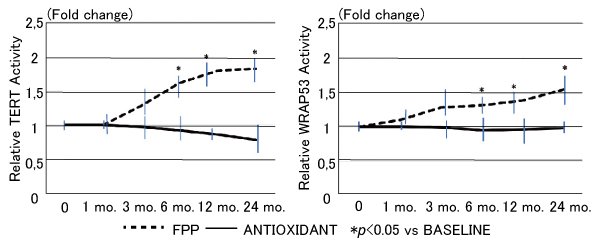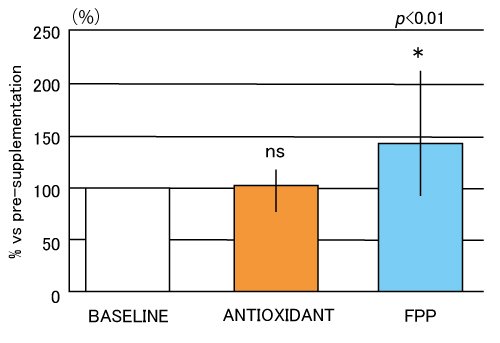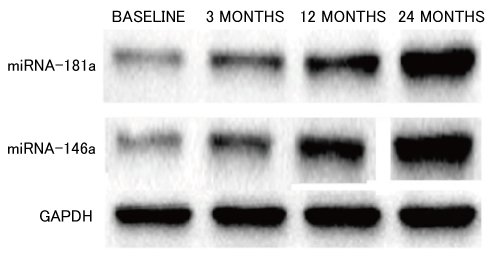Research
Effectiveness of a Fermented Functional Food on Telomere Dynamics and miRNAs in Middle-Aged/Elderly Healthy Individuals: A 2-Year Randomized, Double-Blind, Controlled Clinical Trial
FILE2022
Effectiveness of a Fermented Functional Food on Telomere Dynamics and miRNAs in Middle-Aged/Elderly Healthy Individuals: A 2-Year Randomized, Double-Blind, Controlled Clinical Trial
J Biol Regul Homeost Agents. Oct. 2022;36(5):1311-1319.
The purpose of the study was to test the clinical effect of ORI-FPP® in healthy middle-aged/elderly subjects in terms of telomere dynamics and aging-related miRNAs (micro ribonucleic acids), as compared to an antioxidant formulation. The study population comprised 107 healthy non smoker middle-aged/elderly subjects (58 women and 49 men, mean age 56.6 ± 13.8 years, age range 44-74 years) free from medications and with a mean body mass index (BMI) of 24.7 ± 2.6.
Subjects were double-blinded and randomly allocated to 2 groups: (A) ORI-FPP® 4.5 g plus 1 cp of cellulose and (B) flavoured sugar 4.5 g plus 1 cp containing a mix of antioxidants. Leucocyte telomere length (TL), gene expression related to telomere maintenance genes (TERT (telomerase reverse transcriptase) and Wrap53) and telomerase activity (TRAP) were assessed by quantitative reverse transcriptase-polymerase chain reaction after both nutraceutical interventions. This was also associated with gene expression evaluation of SOD (superoxide dismutase), CAT (catalase), GPx1 (glutathione peroxidase-1) and hOGG1 (human 8-oxoguanine DNA glycosylase 1) as well as miRNA-146a and miRNA-181a. Dietary and psychological (10-item Cohen Perceived Stress Scale) questionnaires were administered at the start and throughout the two-year study.
TL was unaffected by treatments but a significant TL increase was observed at the end of the study in the 60-74 years old group treated with FPP®(Figue 1). Gene expression of TERT and WRAP53 showed a significant upregulation (168% and 57%, respectively) in group A as compared with group B starting from the 6th month observation (p < 0.01 vs group B), together with TRAP (p < 0.05 vs group B) (Figue 2, 3). CAT, SOD1 and GPx1 were comparably upregulated by both treatments(Figue 4). However, only FPP® upregulated hOGG1, miRNA-146a and miRNA-181a. TERT and WRAP53 gene expressions were significantly correlated to GPx, hOGG1, miRNA-146a and miRNA-181a gene expression(Figue 4, 5). These data suggest that ORI-FPP®, unlike the antioxidant control formulation, could significantly benefit TL dynamics.

Fig. 1. Age- and baseline-adjusted differences changes in TL z score
at the end of antioxidant cocktail and FPP® intervention period.

Fig. 2. Time-course of relative activity of telomerase maintenance genes
TERT and WRAP53 expressed as fold variation.

Fig. 3. Telomerase activity: Effect of nutraceutical supplementations at 24 months.

Fig. 4. Time-course gene expression: Effect of FPP® and antioxidant.

Fig. 5. Time-course effect of FPP® supplementation
on miRNA146a and miRNA181a gene expression.
